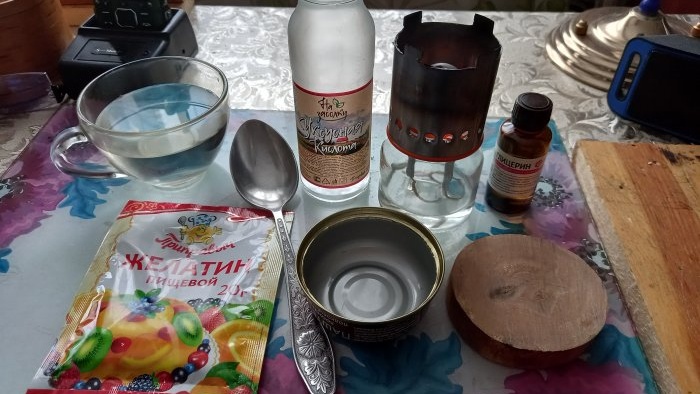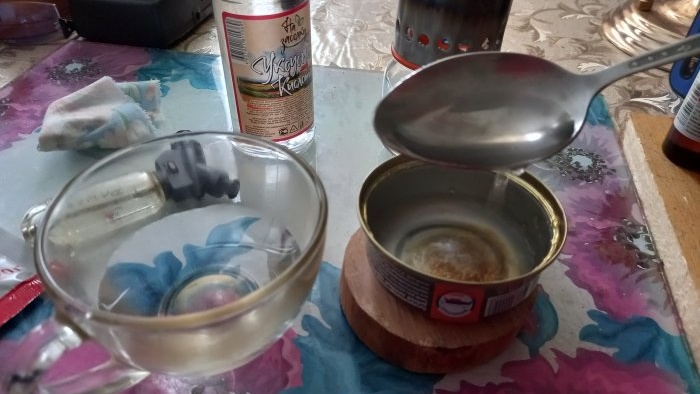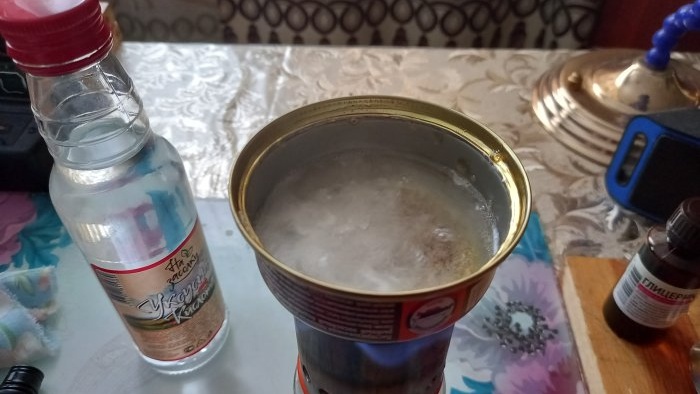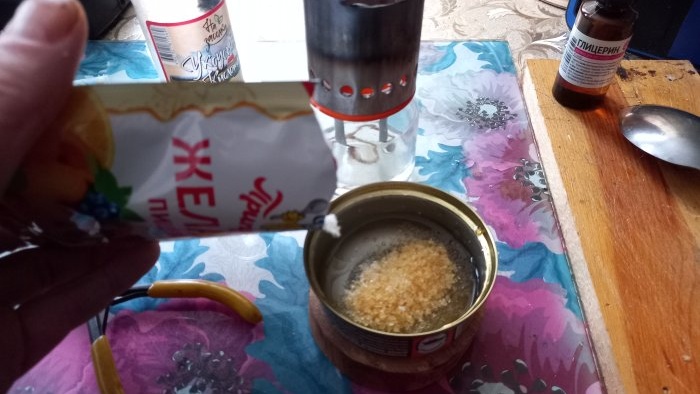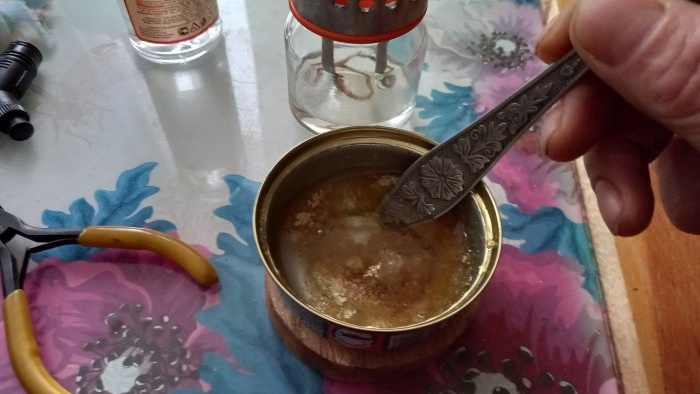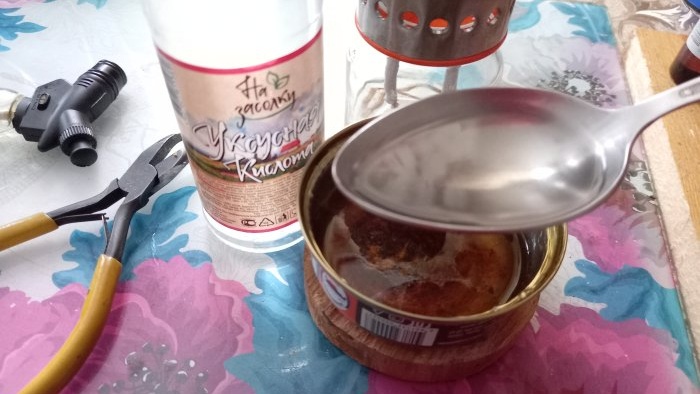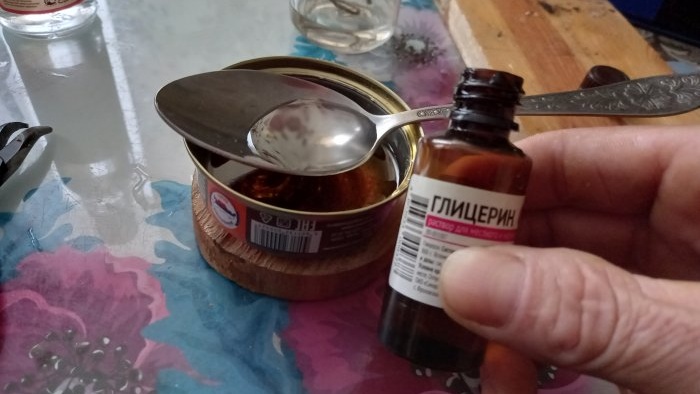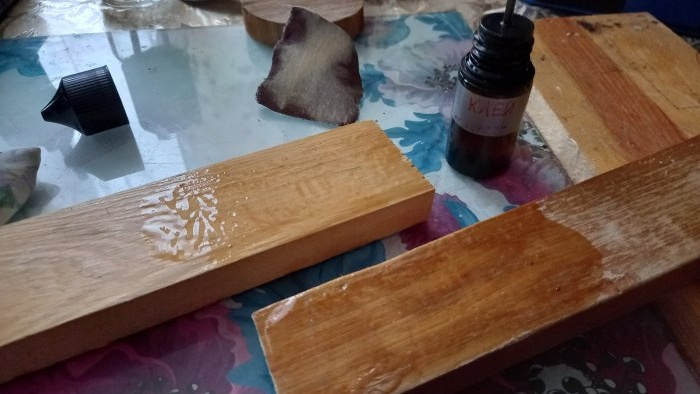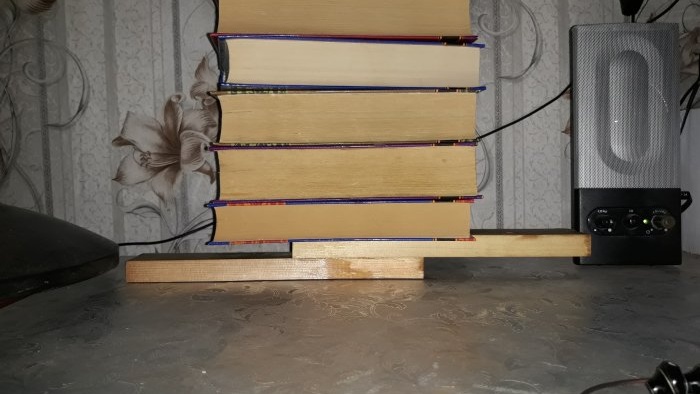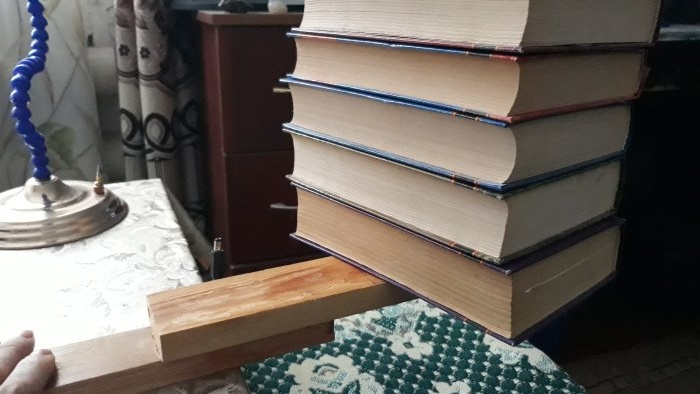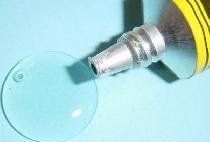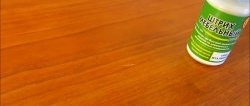Good glue, during repair or manufacturing furniture – an extremely necessary and irreplaceable thing, like nails, a hammer and a hacksaw. Nowadays, the choice of construction adhesives is huge and varied. Various quality and any price category. But you can never be one hundred percent sure of the quality of even the most expensive glue. Adhering to the principle “If you want to do something well, do it yourself”, it always worked only for the benefit. That’s why we will make wood glue ourselves. In addition, it will take very little time, about 15 minutes. And, what is also important, it will cost a few pennies!
Will need
- Water.
- Gelatin.
- Vinegar 70%.
- Glycerol.
- Small metal container.
- Gas burner or alcohol burner.
- Dinner spoon.
- Cloth napkin or rag.
- A small sealed container for ready-made glue.
Making wood glue
Pour three tablespoons of plain water into a prepared metal container (I took a washed tin can).
Place a container of water on the stove or burner and bring to a boil.
Using pliers or a napkin, remove the hot container with boiling water and immediately pour 10 grams into it. gelatin.
This is exactly half of a twenty gram package. Let's start mixing.
Gelatin dissolves in water for a very long time, especially in cooling water. Therefore, if the mixture begins to cool, put the container back on the gas and heat it again, without ceasing to stir.
Repeat the heating procedure until all the gelatin has dissolved.
The mixture should have a consistency similar to jelly. To a specifically smelling jelly! There is still a smell from hot gelatin, and now vinegar will also come into play, so it would be nice to open the window slightly until we finish the work and pour the glue into an airtight container. But the qualities of the glue are worth putting up with these inconveniences for a couple of minutes. So, the gelatin has dissolved, now add one tablespoon of 70 percent vinegar.
Mix thoroughly. Next, add glycerin. Half a tablespoon.
Mix everything again until smooth. We wait for the glue to cool and pour it into an airtight container.
Well, now you can test the glue in action. Take any two unnecessary pieces of boards. Small ones. We clean the bonded surfaces with sandpaper.
Apply glue to the cleaned surfaces.
We apply the surfaces with the applied glue to each other and press tightly.
It is better, of course, to use special clamps, but in the absence of them, something heavy, such as a stack of thick books, will do. Leave the boards to be glued under pressure for 15-18 hours. Or better yet, for a day. After the specified time has passed, we take out the glued pieces of wood from under the press and test them for tearing. That heavy stack of books with which I pressed the planks yesterday was easily held by the glued part!
This is quite enough for carpentry work, unless of course you are making a pen for an elephant! But I still decided to bring the tests to the point of complete failure of the glued wood. Using the hook of the spring scale, I pulled one end of the glued board towards me, after stepping on the other. Pulled to break. With a load of about thirty kilograms, the boards did tear apart from each other. I was unable to capture this moment in a photo, but everything is on video. So, what we have, in general; Considering the small area of the glued surface, this is a very good result! Not every professional glue can handle this! This glue is ideal for restoring old, antique, and rare furniture. And also for assembling a variety of wooden models, shelves for souvenirs, and similar wooden objects. When cooling, the glue in the container will thicken and turn into jelly, but this will not affect its properties - just immerse the container with glue in warm or hot water for a couple of minutes, and it will become quite fluid again. And some more interesting information about this glue; this glue is not something new, a modern invention. The first versions of a similar glue were boiled down gelatin from the bones and sinews of animals hunted by ancient people, for gluing compound bows, and attaching flint tips to a wooden shaft. Today you don’t need to get anyone, just buy a bag of dry gelatin for 5 rubles in the nearest store. There are many more recipes for a wide variety of homemade adhesives, with excellent adhesive qualities, both for wood, and for metal, and for plastic, and many other building materials.

